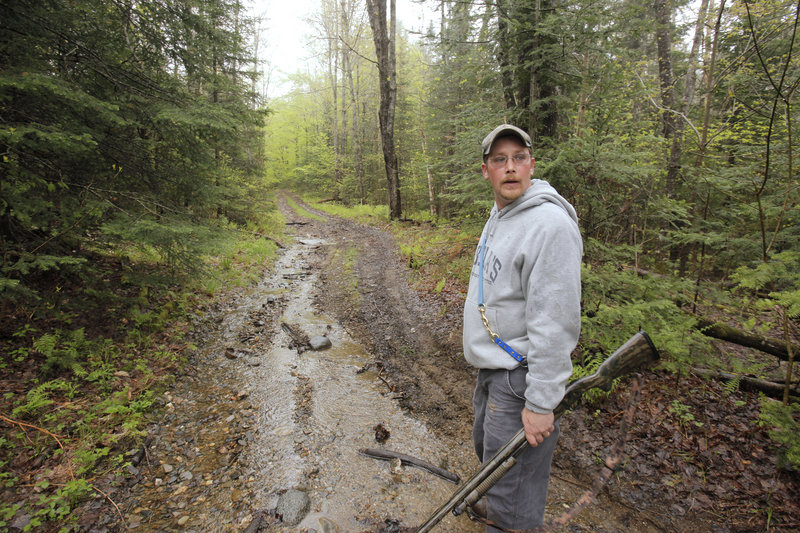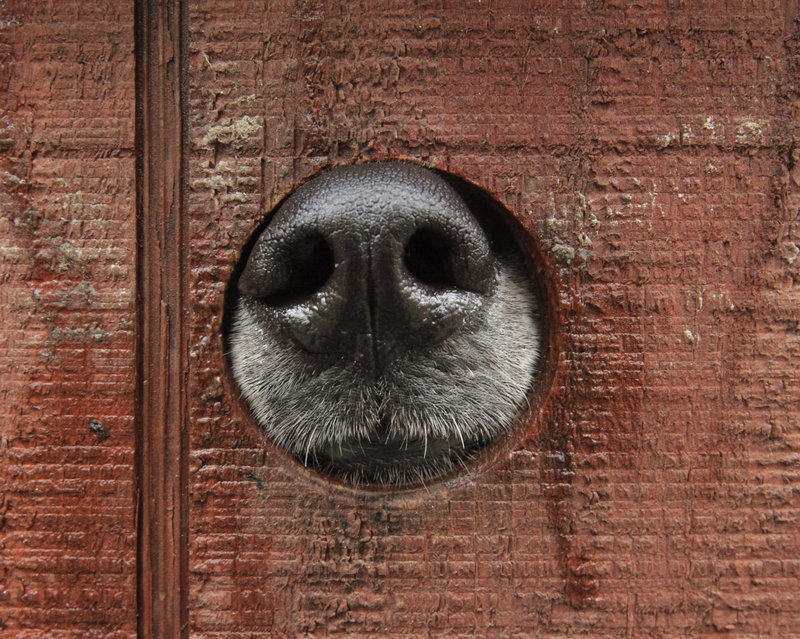THORNDIKE – Five dogs, nine hunters, 12 hours: and only a half-dozen empty tanks of gas to show for it.
This is coyote hunting in Maine, a growing activity that is considered one answer to the shrinking deer herd.
Officials at the Department of Inland Fisheries and Wildlife are so concerned with decreasing deer numbers, and so sure some targeted coyote hunting helps, they’re compensating coyote hunters in some areas with gas money.
The hunters in the loosely formed Knox Ridge Coyote Hunters club in Thorndike don’t see those gas checks. They hunt coyotes anyway.
They focus a concentrated effort on one of the biggest deer wintering yards in the midcoast.
That means most every Saturday is spent chasing hounds with GPS collars, driving dirt roads from dawn to dusk, and often coming up empty.
“It’s such a challenge to kill one,” said Jason Spencer, who started the group effort seven years ago.
The desire and drive to outwit and shoot dozens of coyotes is not new. But the work of hunting coyotes hasn’t gotten any easier, despite advances in GPS technology.
Former Kennebec Journal outdoor reporter Gene Letourneau in 1990 wrote about the “first generation” coyote hunters in Thorndike. Several years ago, a younger group took over.
“He’s the master,” said Registered Maine Guide Nelson Cole, a coyote hunter for three decades, with a nod toward Spencer.
“I first started hunting them in ’73 to ’74,” Cole explained. “I saw tracks and didn’t know what they were. Since the deer has diminished, we want to hunt them again. Coyote is not 100 percent the reason (for the loss of deer). But it’s what we can do.”
The coyote is one of just four species in Maine that has no closed season. That means hunters can take a coyote any time, any place, while following standard hunting laws.
But how effective coyote hunting is in helping deer survive winter remains a question.
The state estimates there are only 12,000 coyotes in Maine. But coyotes can have a litter of six to eight pups, travel huge distances, and are highly adaptable.
Spencer said in Knox Ridge hunters and trappers took 150 coyotes in the past year. At a one-square-mile farm in the area, he said 200 deer were counted this winter, which was an increase from last winter.
But does this effort help the deer herd over time?
Wally Jakubas, the state’s coyote study leader, isn’t sure.
“The department has always maintained that focused controlled efforts especially around deer wintering areas, if successful, helped deer in a focused effort,” Jakubas said. “If you took 150 in a year, and did that repeatedly, I would think that would be enough to keep the population down. It’s not an easy thing.”
Jakubas said the challenge is that eastern coyotes are resilient, resourceful, and efficient.
While hound dogs track them at a run following a scent that will spread across a wide swath, the coyote moves in a straight line, trotting to conserve energy.
The work of coyote hunting, even with trained hounds, as the Knox Ridge team proved on May 21, is exhausting.
Four hours into the hunt, as two dogs grew weary and slow, Spencer sent his “Mixer dog” into the field.
Spencer got the dog from one of Cole’s hunting dogs seven years ago. He trained the dog to focus on coyotes.
“I spent every day with him for a two years,” Spencer said.
A huge crate in the back of a pickup truck is opened and the big dog goes wild, wound up as it is for the chase. Mixer runs directly at Spencer who yells, “road, road, road,” to the dog, telling it to find the coyote scent on the trail.
The dog turns and flies off down the dirt road, followed by two trucks.
Four other hunters in trucks help surround a huge wooded, wet area in which the dogs are running, waiting for the hounds to chase the coyote out of the bog. But the GPS handheld devices only show the coyote doing loops.
“We look at the (GPS) and see the line it’s run before, and we try to head it off. We try to outsmart it. But they’re pretty amazing creatures,” Spencer says.
As he watches Mixer loop back on a previous coyote track, a line marked on the GPS device, Spencer encouraged Mixer from miles away.
“Come on, dogs. I know you’re doing all you can,” he whispers.
But four hours later, the coyote has eluded them all.
They’ve been there before. The term wily coyote is more than just a cartoon nickname.
“I think coyotes are really clever,” Jakubas said. “There is a thought that all the pressure on the coyote out West was responsible for breeding a super coyote, by natural selection. Some believe in some respects, you’re almost making matters worse.”
Staff Writer Deirdre Fleming can be contacted at 791-6452 or at:
dfleming@pressherald.com
Twitter: Flemingpph
Send questions/comments to the editors.





Comments are no longer available on this story